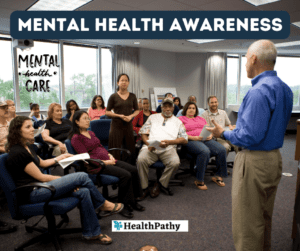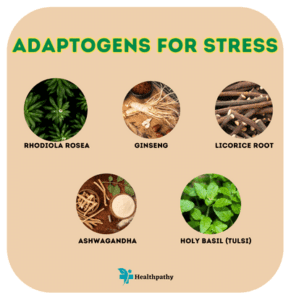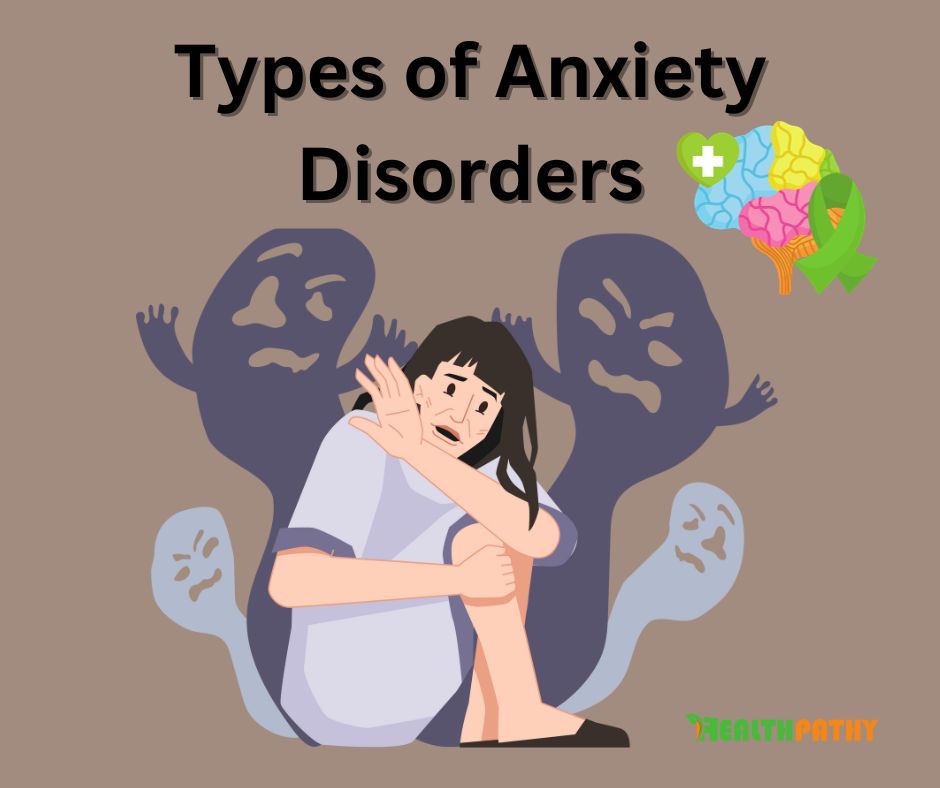Types of Anxiety Disorders
Anxiety is a normal human emotion that everyone experiences from time to time. It’s the body’s natural response to stress, danger, or uncertainty. However, when anxiety becomes chronic, excessive, or overwhelming, it can develop into an anxiety disorder. Anxiety disorders are a group of mental health conditions characterized by persistent and intense feelings of fear, worry, and apprehension. In this article, we will delve into the different types of anxiety disorders, shedding light on their unique features and symptoms.

Generalized Anxiety Disorder (GAD)
Generalized Anxiety Disorder is one of the most common anxiety disorders. People with GAD experience excessive worry and fear about everyday events and activities. They often anticipate catastrophic outcomes and struggle to control their anxiety. Physical symptoms such as muscle tension, restlessness, and sleep disturbances are common in individuals with GAD.
Panic Disorder
Panic disorder is marked by recurrent and unexpected panic attacks, which are sudden surges of intense fear or discomfort. These attacks can be accompanied by physical symptoms such as heart palpitations, sweating, trembling, and a feeling of impending doom. People with panic disorder often live in fear of having another panic attack.
Social Anxiety Disorder (Social Phobia)
Social anxiety disorder, also known as social phobia, involves an intense fear of social situations and being judged or scrutinized by others. People with this disorder may avoid social gatherings, public speaking, and other situations that trigger anxiety. Physical symptoms like blushing, sweating, and trembling can be prevalent during social interactions.
Specific Phobias
Specific phobias are characterized by extreme and irrational fears of particular objects or situations. Common phobias include fear of flying, heights, spiders, and needles. Individuals with specific phobias go to great lengths to avoid their triggers, and the anticipation of encountering them can lead to intense anxiety.
Obsessive-Compulsive Disorder (OCD)
Obsessive-Compulsive Disorder is characterized by the presence of intrusive and distressing thoughts (obsessions) that drive individuals to engage in repetitive behaviors or mental rituals (compulsions) to alleviate the anxiety. These rituals can consume a significant amount of time and interfere with daily life.
Post-Traumatic Stress Disorder (PTSD)
Post-Traumatic Stress Disorder develops in response to a traumatic event, such as combat, sexual assault, natural disasters, or accidents. People with PTSD may experience flashbacks, nightmares, and severe anxiety related to the traumatic event. Emotional numbing and hypervigilance are also common symptoms.
Separation Anxiety Disorder
Separation anxiety disorder is most commonly associated with children, but it can also affect adults. It involves excessive fear and worry about being separated from loved ones or attachment figures. Individuals with this disorder often experience distress when faced with the prospect of separation.
Agoraphobia
Agoraphobia is characterized by a fear of situations where escape may be difficult or embarrassing, such as crowded places or public transportation. This fear can lead to avoidance of these situations, which can severely limit a person’s life.
Selective Mutism
Selective mutism is a childhood anxiety disorder in which a child consistently does not speak in specific social situations or with certain people, despite being capable of speech in other settings. It often occurs in school or social environments and can be a source of distress for both the child and their caregivers.
Summary
Anxiety disorders can have a profound impact on an individual’s life, affecting their relationships, work, and overall well-being. It’s essential to recognize the different types of anxiety disorders and seek appropriate treatment and support when needed. Effective treatments, including therapy, medication, and lifestyle changes, can help individuals manage their symptoms and regain control over their lives. If you or someone you know is struggling with anxiety, don’t hesitate to seek help from a mental health professional. Understanding and addressing anxiety disorders is a crucial step towards achieving better mental health and a higher quality of life.
Read More






Follow us





